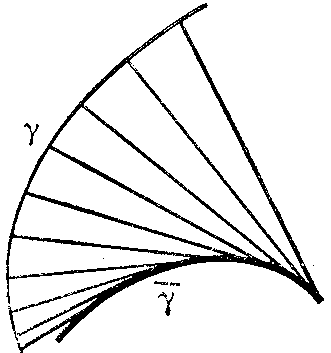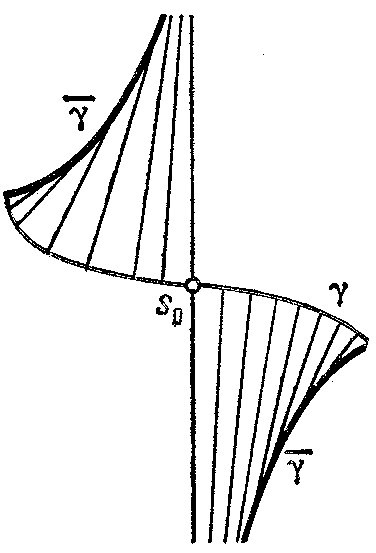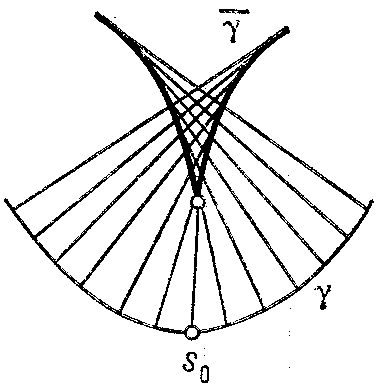Evolute
of a plane curve
The set  of the centres of curvature of the given curve
of the centres of curvature of the given curve  . If
. If  (where
(where  is the arc length parameter of
is the arc length parameter of  ) is the equation of
) is the equation of  , then the equation of its evolute has the form
, then the equation of its evolute has the form
 |
where  is the curvature and
is the curvature and  the unit normal to
the unit normal to  . The figures shows the construction of the evolute in three typical cases:
. The figures shows the construction of the evolute in three typical cases:
a) if along the entire curve  has a fixed sign and
has a fixed sign and  does not vanish;
does not vanish;

Figure: e036670a

Figure: e036670b
b) if along the entire curve  has a fixed sign and
has a fixed sign and  vanishes for
vanishes for  ; and
; and
c) if  for
for  ;
;  for
for  ;
;  , and
, and  does not vanish (the point of the evolute corresponding to
does not vanish (the point of the evolute corresponding to  is a cusp).
is a cusp).

Figure: e036670c
The length of the arc of the evolute corresponding to the segment  of
of  is
is
 |
The evolute is the envelope of the normals to  . The curve
. The curve  is called the evolvent of its evolute (cf. Evolvent of a plane curve).
is called the evolvent of its evolute (cf. Evolvent of a plane curve).
Comments
The evolvent is also called the involute; thus, if  is the evolute of
is the evolute of  , then
, then  is the involute of
is the involute of  , cf. Evolvent of a plane curve.
, cf. Evolvent of a plane curve.
References
| [a1] | H.-R. Müller, "Kinematik" , de Gruyter (1963) |
| [a2] | M. Berger, B. Gostiaux, "Differential geometry: manifolds, curves, and surfaces" , Springer (1988) pp. 305 (Translated from French) |
| [a3] | J.L. Coolidge, "Algebraic plane curves" , Dover, reprint (1959) pp. 195 |
| [a4] | M. Berger, "Geometry" , I , Springer (1987) pp. 253–254 |
| [a5] | H.W. Guggenheimer, "Differential geometry" , McGraw-Hill (1963) pp. 25; 60 |
Evolute. Encyclopedia of Mathematics. URL: http://encyclopediaofmath.org/index.php?title=Evolute&oldid=46863